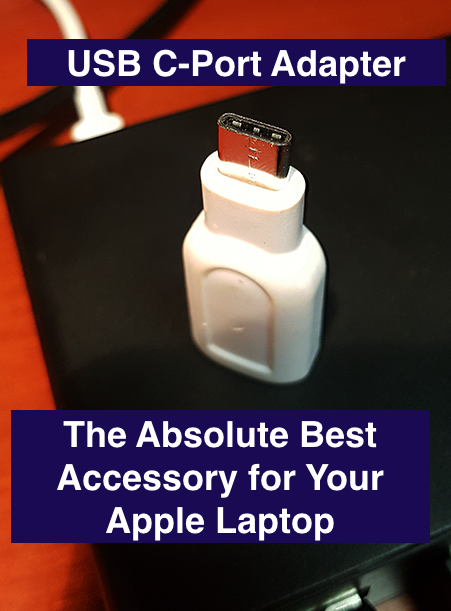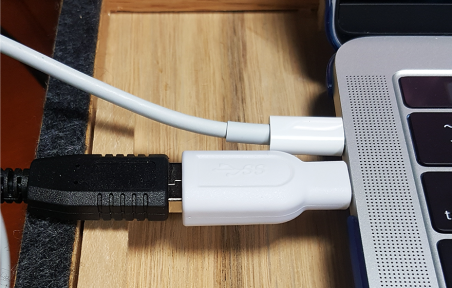The Absolute Best Accessory for Your Apple Laptop
 By Tony DePrato | Follow Me on LinkedIn
By Tony DePrato | Follow Me on LinkedIn
I am not one to recommend products. However, lately I have come to realize that since Apple removed all the useful ports on their laptops, I am reliant on a single $2.00 piece of hardware: a USB C-Port Adapter. This little piece of plastic magic makes my workflow work.
This tool is a simple design at a modest price point, yet, it is often the solution that moves a project from idea to reality. I connect dozens of devices using this technology bridge in order to deliver curriculum, podcasts, 3D printed objects, etc.
The most remarkable quality this small island of magic possesses is that is constantly reminds me that we do not need solve problems via upgrades. We should be solving problems with technology and educational technology by tightening our workflows and being resourceful.
There seems to be a constant insistence that X is not fast enough, or Y is not dependable. I constantly hear people state that the equipment they have in 2019 cannot solve a 2001 problem. The issue is rarely the stuff, the issue is usually the workflow.
Try Something New with Something Old
Here is an exercise I would recommend everyone try on their campus. This can be done for fun, as club, or as some type of fun challenge.
Have departments, staff, students, and other community members submit some issues or problems that continue to linger in the classrooms (learning spaces). Appoint a small team to review the problems, and choose one.
Finally, put this problem out to those willing to compete for a solution with the following criteria:
- The total budget that can be used to solve the problem must be less than $10.00 (or equivalent)
- Solving the problem using used equipment, materials, recyclables, etc. earns teams extra points
- Using school owned equipment to plan and produce a solution is required; donations are not allowed
Professionally, I actually try to follow this process all the time. The items above are on a personal check-list. My goal is to model a solution using existing resources.
What if It Works?
Often real solutions arise that are functional, but below standard. That is not a bad thing. The school has empowered a community driven development cycle, and created a working prototype under the umbrella of healthy competition. There are no losers in this game, everyone learns, and everyone wins.
In fact, if a school can continue to improve the process, and raise the standard internally, the outcome would be a community built and maintained solution. Older students can keep the momentum going as long as school mentors and leaders provide regular oversight.
Small Solutions have Real Power
This small solution below, is actually very important to my workflow.

No one needs to build a Tesla to change the world for the better. It is important to develop a philosophy of empowering students and teachers to create small things that improve daily workflows, increase efficiency, and add comfort and entertainment to the campus.
Start small. Ask questions. Find a problem. Make a prototype. Change the world.
Source: IT Babble Blog and Podcast
You must be logged in to post a comment.